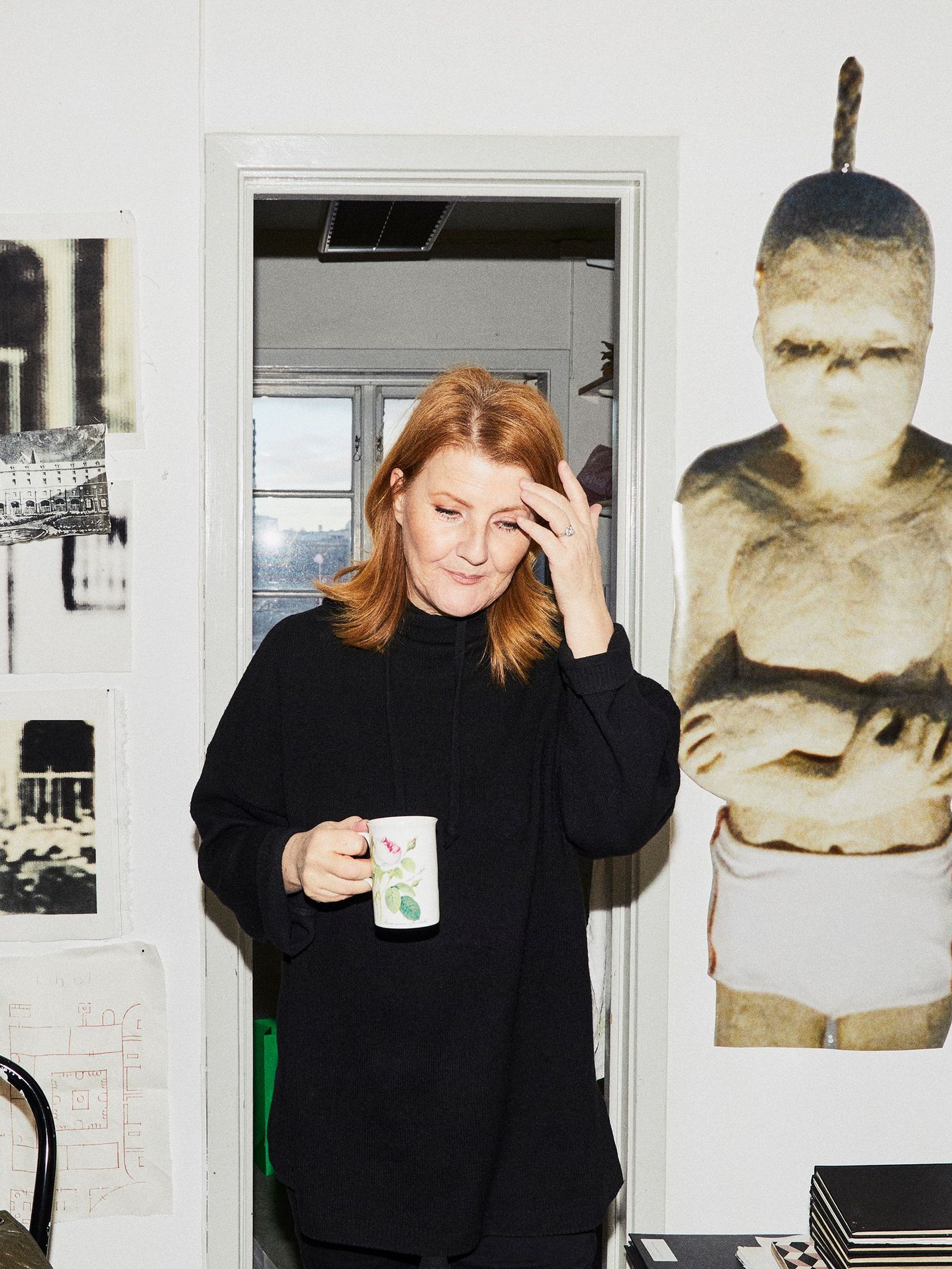One of Sweden's most famous contemporary artists talks love, fear and wonder ahead of her new retrospective exhibition
As the grand dame of contemporary Swedish art, Charlotte Gyllenhammar has had an illustrious and well documented career, with forays into the realms of sculpture, photography, painting, and video. For those outside of art circles, she is perhaps best known as the artist who suspended a 120-year-old oak tree upside down on Drottninggatan in central Stockholm in the midst of the financial crisis in 1993.
Yet her career consists of far more than just that controversial piece (entitled 'Dö för Dig', 'Die for You'). Gyllenhammar's body of work spans more than three decades and has been shown in major institutions across the globe, toying with themes including identity, memory and the public versus the private sphere.

Photo: Elvira Glänte

Photo: Elvira Glänte
Gyllenhammar was born into a life of privilege. Her father is the revered Pehr Gustaf Gyllenhammar, former politician, and CEO of the Swedish car company Volvo, and one in a long line of successful industrialists. The family split their time between Gothenburg and Stockholm during the artist's youth, and she pursued higher arts education in both cities, first at the Gothenburg College of Art and then the Royal Institute of Art in Stockholm. Initially focusing primarily on painting, Gyllenhammar changed direction when she embarked on her second MFA at the Royal College of Art in London, looking instead to installation and sculpture.
While her media of choice may have altered, it seems Gyllenhammar was never in doubt regarding her calling. "I knew at an early age, I envisioned my life as an artist," she says. "Because I enjoyed it and because I needed to be left alone."

Photo: Elvira Glänte
Influenced by her immediate surroundings growing up, Gyllenhammar found inspiration in stories. "As a child I was told serious fairytales with quite cruel fates of little children, they were often threatened with kidnapping by trolls, witches, and dragons," she says. "These Nordic folktales were rich with symbols and dangers." The artist often depicts children in her sculpture, perhaps symbolising a collective innocence in what can be interpreted as a very unforgiving environment. Not that her childhood memories are all dark. "At the same time, Moderna Museet in Stockholm was a kind of 1960s paradise, bright with optimism and rebelliousness, where artists like Niki de Saint Phalle, Meret Oppenheim and Robert Rauschenberg inspired me," she recalls.

Photo: Elvira Glänte

Photo: Elvira Glänte
These days the artist maintains a very rigorous routine regarding her work. "Right now, I spend my days walking back and forth to the studio; walking, thinking, sketching, testing and contemplating. When I need to be focused, I try to keep myself in a monotonous movement so that I can reach a deeper state of concentration," she says, before adding, "It probably looks quite boring from the outside."
'Boring' is an adjective that could never be used to describe her work, which regularly sparks discussion and wonder. The artist is suitably elusive when asked about her inspirations. "It’s mysterious," she says. "The questions 'what inspires you?' is wide and impossible. The straightest answer would be love, fear and wonder."

Photo: Elvira Glänte
In some ways, Gyllenhammar's answers echo her art. Not unlike here bronze sculptures with their hard, unbreakable finishes, or her videos, stark and all consuming, the exterior is perceived as organised, in alignment. Yet delve deeper and you enter a world of enigmatic ambiguity and vulnerability. Her work affects the viewer, bringing a myriad of contrary emotions to the surface through the topics she confronts: life, death, and the human condition.

Photo: Elvira Glänte
These themes are apparent in her upcoming exhibition, Believe My Eyes at CF Hill in Stockholm. It tackles reflections on the artist's past. Among many elements in the exhibition the artist has chosen to include a host of miniatures and models she has created, while also revisiting the famed sculpture seesaw 'Equilibrium' by creating a smaller variation of the piece. "The title of the exhibition says something about looking and seeing, it’s both literal and figurative," says Gyllenhammar. "It’s about attentiveness and painful doubt."
Charlotte Gyllenhammar’s exhibition Believe My Eyes is on view at CF Hill, Västra Trädgårdsgatan 9, Stockholm, 18 February to 18 March 2022.
